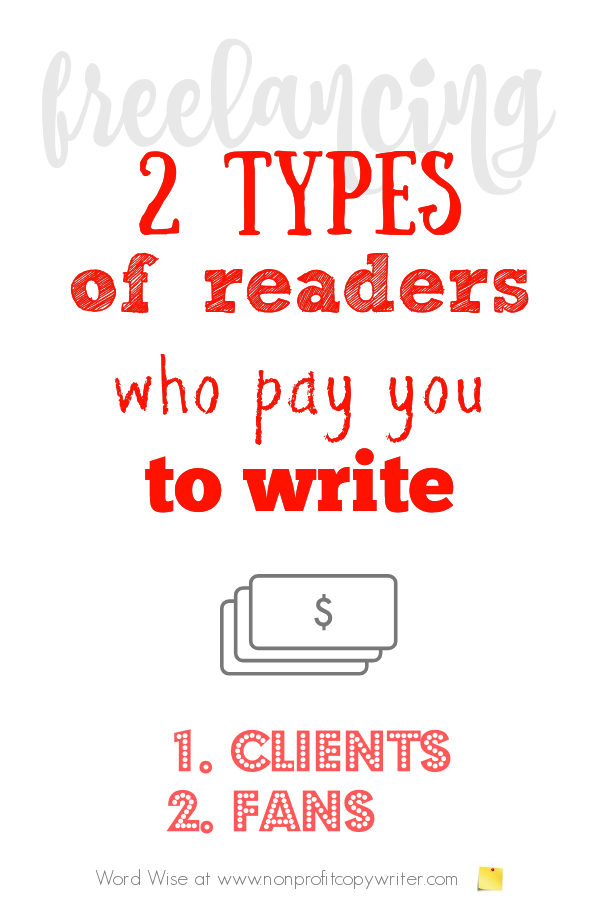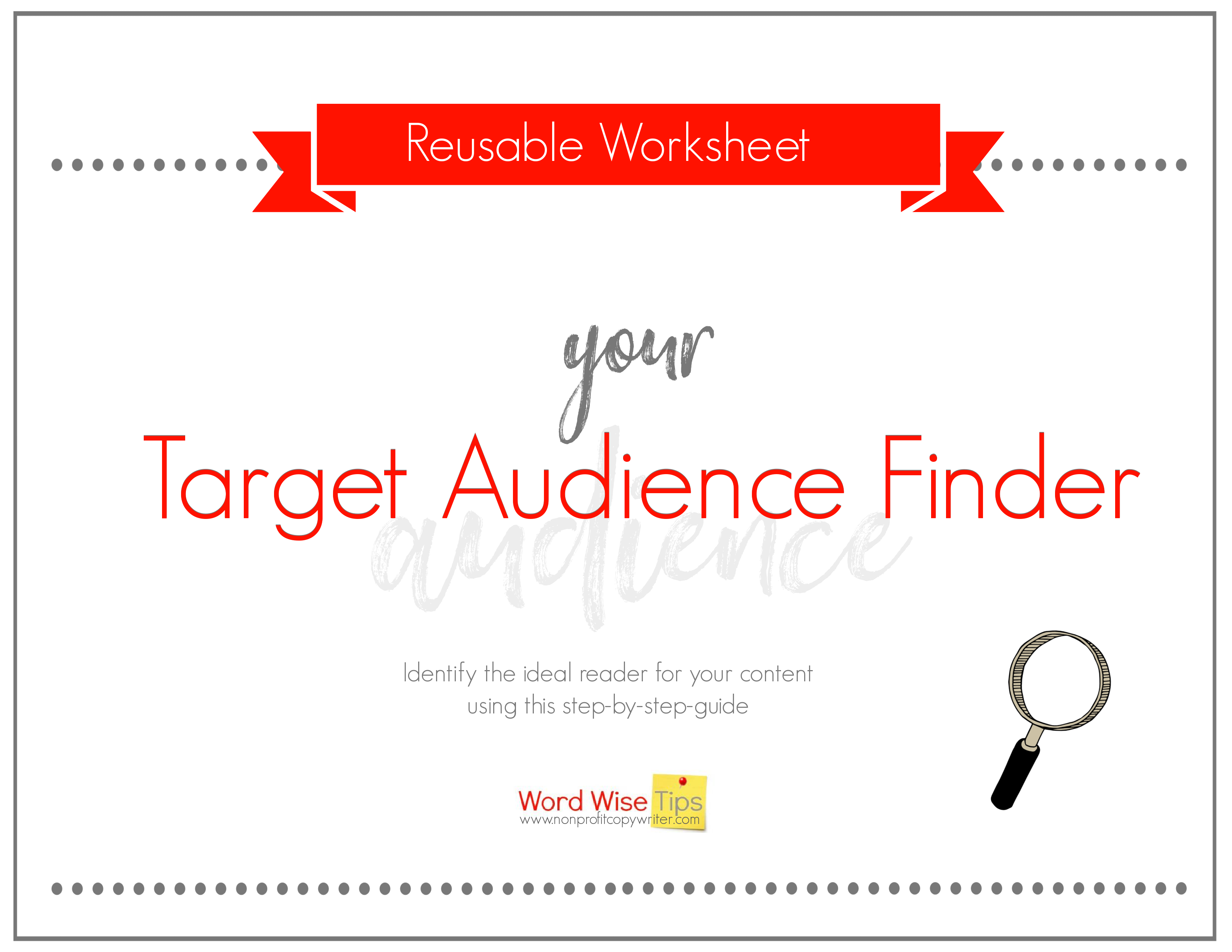Save Time: Get 5 Simple Writing Tips
you can put to use in 10 minutes
Two Types of Readers That Pay You To Write
Award-winning writer Kathy Widenhouse has helped hundreds of nonprofits and writers produce successful content , with 750K+ views for her writing tutorials. She is the author of 9 books. See more of Kathy’s content here.
Updated 7.22.25
Two types of readers let you make a living as a writer: clients and fans.
This approach is a stark contrast to the traditional (and daunting) freelance writing formula. One where you’re looking for buyers, not readers. You make pitch after pitch to dying print magazines … beg small sites to publish your guest post … settle for low pay on content farms like Fiverr and Upwork. It’s all in the hopes of getting any work at all, whether it’s about Malawi’s emerging markets (even though you know nothing about finance) or the latest Smart Board reviews (even though you know nothing about tech).
In truth, making money from freelance writing boils down to one question: what readers like your content or your skill so much that they are willing to pay for it?
Just two types of readers that fill the bill. Once you figure out who they are and where to find them, they will fill your bank account too.
Two types of readers that pay for words
1. Clients
These are readers who hire you to write their content for them. Note that it’s their content. Not yours.
Who are these readers?
These are businesses, nonprofits, big companies, small mom-and-pops, individuals who hire you to ghostwrite, online and print magazines that accept your queries and publish your articles — anyone who wants content. I’ve even had a parent hire me to help edit his son’s college essays. Clients are readers who shell out bucks for you to produce content because …
- They don’t have a staff writer.
- They don’t write well or lack the inclination to learn.
- They are busy running their biz or their life and don’t have time to write their own blog posts, website content, newsletters, articles, social media posts, grant applications, strategic plans, letters, direct mail, phone scripts, email campaigns.
- They hear from you just at the time when they need content.
Where do you find these readers?
You find these readers because you are immersed in their industry and hungry to learn as much as you can about it. You follow the sites and experts in that niche. You talk their talk. And you reach out to them and build relationships with them. (Later, when you’ve got experience, these readers can come to you by referral.) Or you’ve connected with them and stayed in touch with them until the moment comes when they need a writer.
I found my first nonprofit clients because I am passionate about ministries. I’d taught a class at church for more than a decade when a member approached me. “You should write for the Christian market,” she said. Since she was an English teacher, I took those words to heart.
For years I’d been obsessed with getting high-quality content into my class members’ hands. It was natural, when I turned to freelancing full-time, to reach out to faith-based nonprofits and offer my services. I wasn’t trying to write about liposuction or the best vacuum cleaners for high-rise offices or how to choose pickleball gear — topics about which I know little and care even less. I was able to connect with ministries because I had experience in their field and wanted to be part of their work. I was desperate to see them succeed.
A-list copywriter Henry Bingaman calls these readers “ELF clients” — meaning they’re easy, lucrative, and fun. They’re easy for you to write for because you understand their mission and message. They’re lucrative because you write for them over and over. And they’re fun because you enjoy the subject matter and are eager to share it clearly and compellingly.
How these readers pay you
It’s work for hire. Once you write the content, the client writes you a check. And you relinquish rights to what you created. The client has ponied up for a product — your words — so they own it.
On the upside: once you’ve written the content, you don’t need to market your words. You get a paycheck and you’re done. The client is in charge of getting it into the hands of their fans and followers. They contract with and pay the printer to send their newsletter … they maintain their email marketing list … their webmaster manages the website for which you simply write pages and blog posts … they submit the grant application you’ve written.
Find the target audience for your next piece of content with this worksheet.
2. Fans
These are the second of two types of readers who pay you for words. You could argue that these are the followers we all want — you know, the thousands who pay $34.99 each for your book and propel it to the top of the bestseller lists.
Who are these readers?
These are your followers on Medium. Your email subscribers. Publishing houses that contract with you to buy your book manuscript … readers that find you on Amazon Kindle, Nook, and other eBook platforms … students who buy your online courses … users who download your printables… consumers who click on affiliate links on your website and make a purchase from your site.
These readers like your content. And they spend their discretionary money and time on it.
Where do you find these readers?
- From your online content. Readers find you organically from searches that lead to your website or blog — particularly when you follow basic SEO principles.
- From your publications. Readers become your email subscribers and subsequently true fans as you consistently send them relevant, useful content in your newsletter. Your social media followers read your posts and click on your links.
- From others’ content. Readers find you through other sites apart from your own, but that are related to your niche — like forums, Facebook groups, LinkedIn groups, Pinterest group boards, that comment you left on a Reddit thread, or the guest post you wrote. And you always include a link to your site when you piggyback on others.
It’s not enough just to be online. You purposefully find these readers. You make yourself visible to them where they hang out online. You are generous with them. You offer them special tips, helpful information, or a unique voice relating to your niche. They are kindred spirits who become your readers and subsequently your fans. They need or like what you have to say about a topic in which they have intense interest.
How these readers pay you
Fans pay you directly when they make a purchase, whether it’s your book, your course, your speaking fee, your printable.
Fans also pay you indirectly through a third party when you …
- Become an affiliate, such as an Amazon Associate. A reader clicks on a link you’ve added to your site and makes a purchase. You receive a percentage of the sale.
- Sell advertising. You get paid an advertising fee from a vendor who promotes his product or service on your site or in your newsletter.
- Recruit affiliates. Others in your niche partner with you to sell your product. You pay them a percentage of sales, but the remainder is income in your pocket.
You own the product, whether it’s a blog or book or another piece of intellectual property. That means you also become a marketer, too. You have all the responsibility of printing, uploading web content, and promoting content. But since you own your content, it generates nice paydays in passive income for as long as you stay in front of consumers.
Two types of readers help you make a living
How can you make money as a freelance writer? Decide which types of readers to cultivate.
- If your goal is to write The Great American Novel and subsequent sequels, then you can cultivate clients to subsidize that dream while you pursue it.
- If your goal is to make a steady income, you may work to find several anchor clients who give you consistent assignments.
- If your goal is to be diversified for the long run, you may pursue clients when you’re just starting out but gradually move to 50% or more independent income as you build a stable of products and a passel of fans.
You can have clients. They will pay you to write their words. Or you can have fans, who pay you for yours.
Or you can have both. When you cultivate two kinds of readers, you can be paid for nearly everything you write.
More Tips for New Writers
Making a Pitch: My Top Tip for Freelance Content Writers ...
The Writing Life: You Can Make a Living With Your Words
7 Streams of Income for Writers...
5 Tips for Building an Audience When You've Just Started Writing ...
Find Freelance Writing Jobs With This Offbeat Strategy ...
Do You Need a Writer Website (or an Upgrade)? Take the Quiz ...
How To Write Your Personal Brand Statement (with an easy template) ...
2 Types of Letters That Get You Paid Writing Gigs...
Look Professional: Ask Freelance Copywriting Clients These 6 Questions...
3 Tips in Getting Freelance Writing Assignments ...
How to find Christian freelance writing jobs ...
The 2 Main Ways to Build Your Freelance Writing Business ...
More tips for freelance writers on our Pinterest board ...
Return from Two Types of Readers That Pay For Your Writing
to Nonprofit Copywriter home
As an Amazon Associate I earn from qualifying purchases.
Share This Page

Named to 2022 Writer's Digest list
BEST GENRE/NICHE WRITING WEBSITE


Stop Wasting Time!
Grab your exclusive FREE guide, "5 Simple Writing Tips You Can Put to Use in 10 Minutes or Less"













